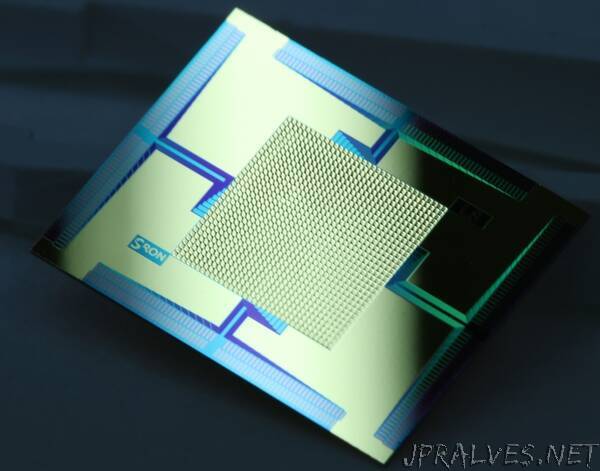
“In 2031, ESA launches its new X-ray space telescope Athena. SRON plays a large role in building one of its two instruments, the X-IFU spectrometer, by producing the camera plus the back-up detectors. SRON scientists have now successfully developed detectors that are optimized for a readout based on a special system called Frequency Domain Multiplexing. They set a new world-record energy resolution at 6 keV of 1.3 eV.
From its orbit around the Sun, 1.5 million kilometers behind Earth, Athena will map hot gas structures in the Universe and study the evolution of supermassive black holes. For that it needs to measure their spectra with unprecedented resolution. To achieve this, it uses superconducting Transition-Edge Sensors (TES) operating at a temperature of 50 millikelvin, which can determine the energy of individual photons. When a photon hits a sensor, it heats up proportional to the photon’s energy. This reduces the superconducting state and the camera reads out a smaller current than usual, again proportionally.
But reading out a current isn’t as easy as it sounds. Developing a quick and dependable readout system is actually one of the biggest challenges for Athena’s X-IFU instrument. It needs to read out 3000 pixels while avoiding any temperature rises for the instrument larger than a thousandth of a degree. Conventional readout systems, based on so-called Time Domain Multiplexing (TDM), have one amplifier per pixel which have to switch on and off sequentially. For the back-up detection chain, SRON is developing a readout based on Frequency Domain Multiplexing (FDM), where only one amplifier is required per forty pixels. The team has now successfully tweaked the TES geometry to minimize unwanted behavior that goes hand-in-hand with an FDM read-out and is caused by a non-linear impedance across the TES.
This is the result of an intensive study of the detector physics, led by Luciano Gottardi (SRON) in collaboration with colleagues from NASA-Goddard. The key contributors are Kenichiro Nagayoshi, who fabricated the lithographic devices, Martin de Wit and Emanuele Taralli, who tweaked the hardware for each test round and performed the tests, and Marcel Ridder, who played a crucial role in the cleanroom to get the process flowing. They are supported by other members of the SRON team, coordinated by Jian-Rong Gao.
After many test rounds, the team has refined the detector design and the readout towards a world-record spectral resolution of 1.3 eV at 6 keV. ‘But more importantly, we have a good understanding of the physics behind it,’ says Nagayoshi. ‘That means we are confident we can achieve an ever higher resolution. Back in 2018 we started at 3.5 eV and we are now at 1.3 eV. We have no reason to believe that it stops here.’
Gottardi: ‘We find ourselves in a happy combination of good ideas, good people and good facilities at SRON. The people in the cleanroom upgrade the devices quickly and we can quickly test them and immediately give feedback. It’s a smooth loop.’”
